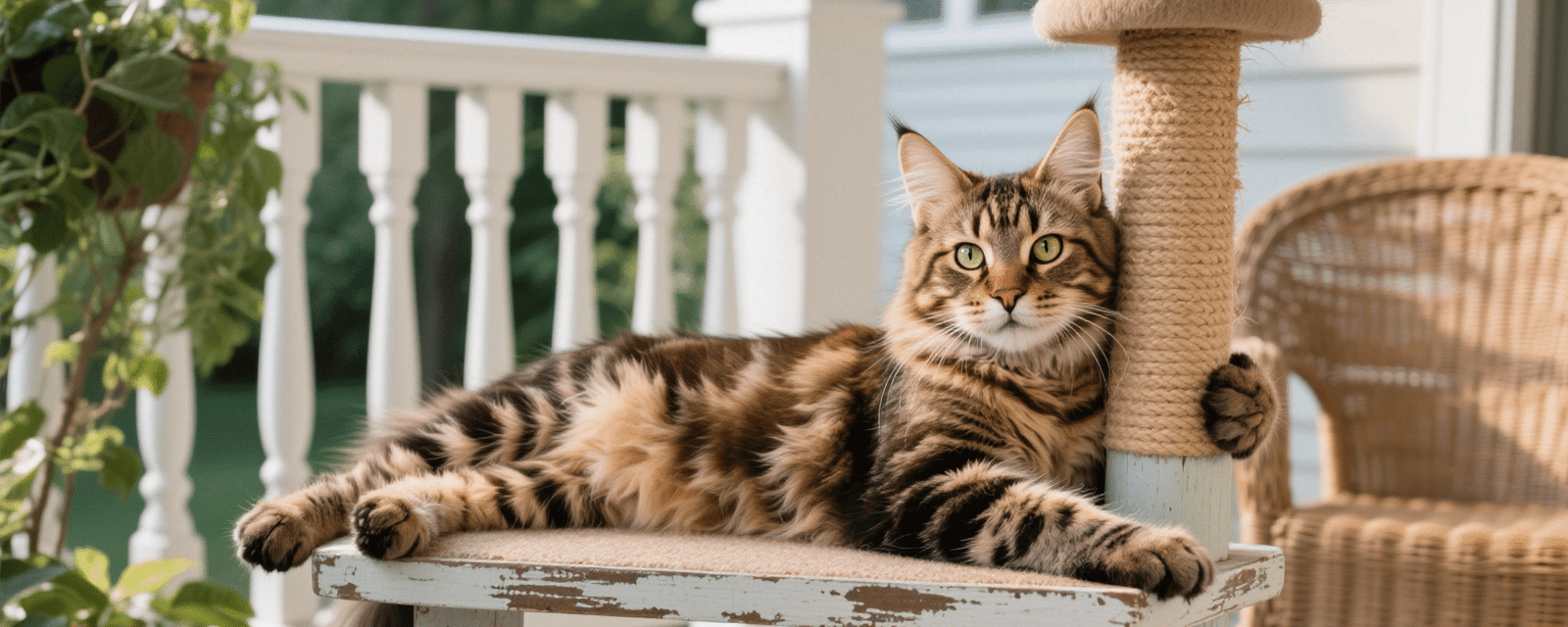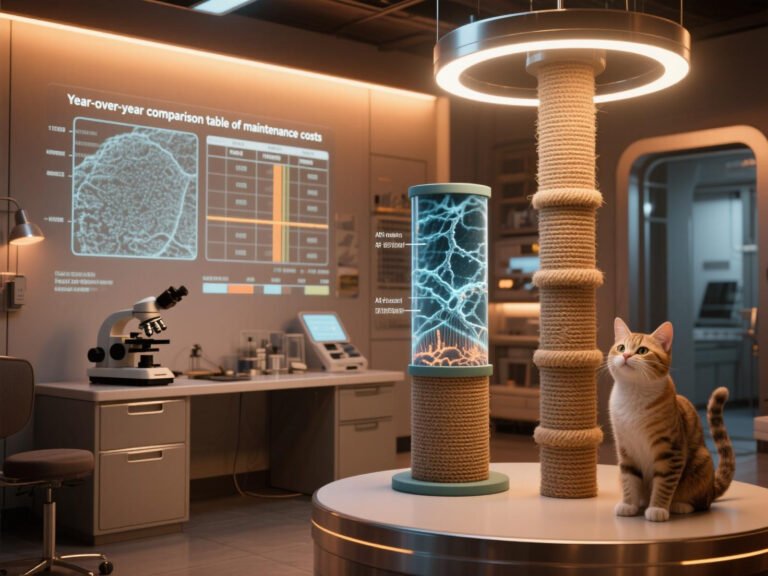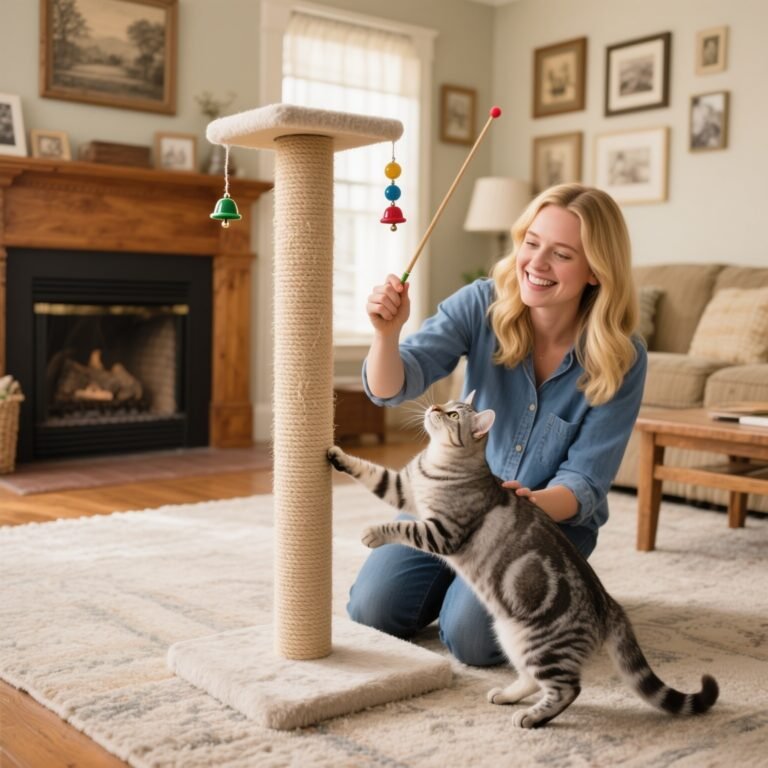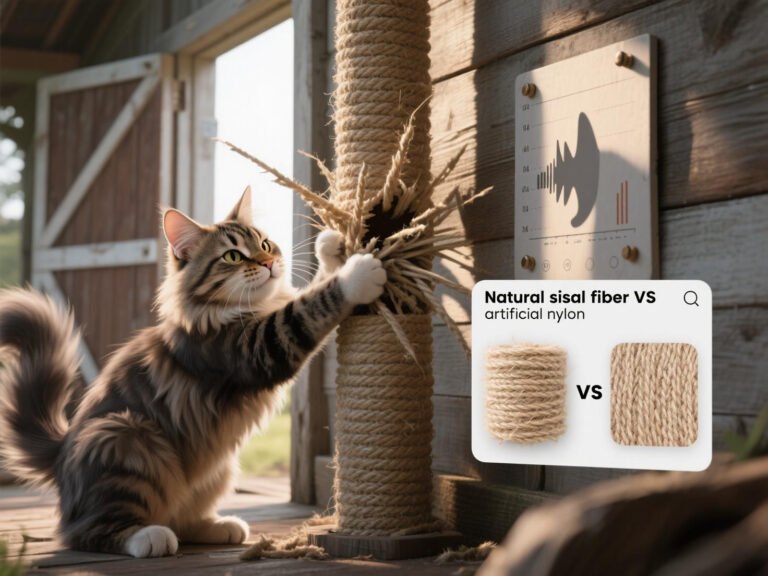What Is a Good Cat Scratching Post? Vet-Ranked Picks for Every Budget
A high-quality scratching post isn’t just a luxury—it’s essential for your cat’s physical health, mental well-being, and your furniture’s survival. But with countless options on the market, how do you choose the right one? This guide combines veterinary insights, material science, and budget-friendly solutions to help you find the perfect match for your feline friend.
Key Features of a Good Cat Scratching Post
1. Material Matters: Sisal, Cardboard, or Silvervine?
Cats instinctively prefer textures that mimic tree bark. Here’s a breakdown of top materials:
| Material | Pros | Cons | Best For |
|---|---|---|---|
| Sisal Rope | Durable, ideal for aggressive scratchers | Rough texture may deter kittens | Long-term use |
| Corrugated Cardboard | Affordable, replaceable | Short lifespan | Budget-conscious owners |
| Silvervine-Infused | Attracts 80% of cats, including non-nip responders1 | Pricier than standard options | Picky or disinterested cats |
Veterinary Tip: Avoid carpeted posts, as they confuse cats into scratching rugs.
2. Stability & Size
A wobbly post is a deal-breaker. Ensure the base is at least 16×16 inches for adult cats. For large breeds like Maine Coons, opt for posts over 30 inches tall to allow full stretching.
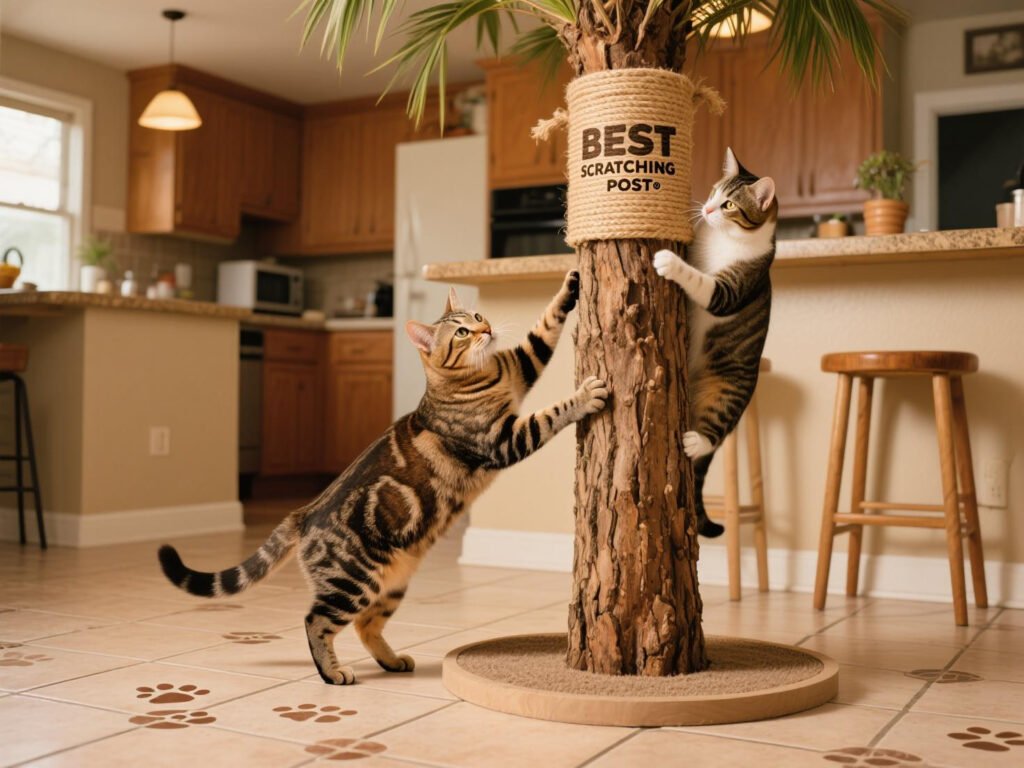
Vet-Ranked Picks for Every Budget
Budget-Friendly (Under $30)
Frisco Corrugated Cardboard Scratcher
- Why Vets Love It: Replaceable layers, eco-friendly, and gentle on paws.
- User Review: “My kitten adores this! Saved my sofa instantly.” – Amazon Customer
PetFusion Ultimate Cat Scratcher Lounge
- Dual Purpose: Doubles as a lounging spot.
- Material: Recycled cardboard with catnip infusion.
Mid-Range (30–30–80)
Yaheetech 63″ Sisal Cat Tree
- Features: 6 scratching posts, 2 hideouts, and a 19-lb weighted base.
- Ideal For: Multi-cat households needing vertical space.
Hepper Hi-Lo Cardboard Scratcher
- Adjustable Design: Tilt angles (0°–45°) cater to horizontal or vertical scratchers.
- Eco Bonus: Made from recycled materials.
Premium (Over $80)
Catit Vesper High Base Cat Tree
- Material: Sustainably sourced wood and ultra-durable sisal.
- Design: Modern, minimalist, and chew-resistant for cats with pica tendencies.
Tuft + Paw Kritter Jungle Gym
- Customizable: Modular components for climbing and scratching.
- Vet Approval: Rounded edges prevent injuries during play.
How to Train Your Cat to Use the Post
1. Strategic Placement
Position posts near high-traffic areas (e.g., couches, windows) to align with territorial instincts.
2. Lure with Attractants
- Rub silvervine powder or catnip on the post.
- Use interactive toys like feather wands to guide paws to the surface.
3. Positive Reinforcement
Reward with treats immediately after scratching. A 2024 study showed cats trained with praise learned 3x faster than those scolded.
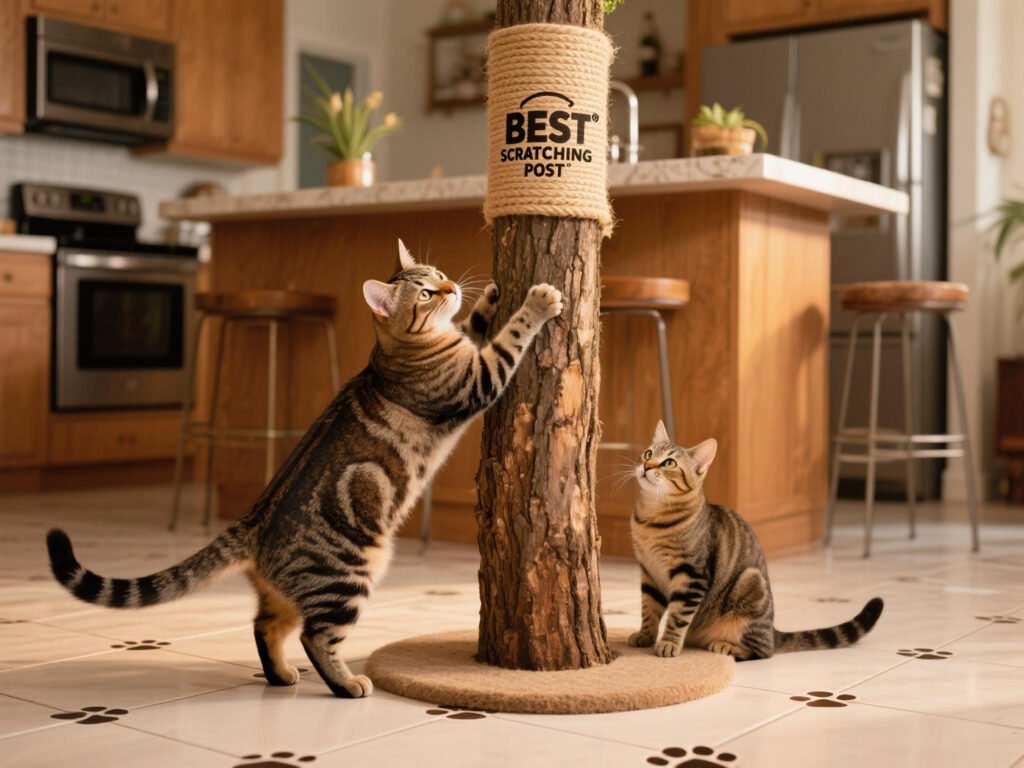
FAQ: Scratching Post Essentials
Q: How often should I replace a scratching post?
A: Sisal posts last 1–2 years; cardboard lasts 3–6 months. Replace when frayed or unstable.
Q: Can I make a DIY scratching post?
A: Yes! Use PVC pipes wrapped in sisal or upcycled wood. Avoid glue with toxic chemicals.
Q: Why does my cat ignore the post?
A: Common issues include poor placement, unappealing texture, or instability. Test materials like silvervine for better results.
References
- ZippyPaws. (2024). Scratching Post: The Best Alternatives to Catnip.
- Corangamite Shire Council. (2025). Cat Containment and Desexing Program.
- Petchef. (2025). Human Creams and Sprays for Cats: What to Avoid.
- AlongWalker. (2025). Cat Trees Are Actually Really Important For Cats’ Well-Being.
